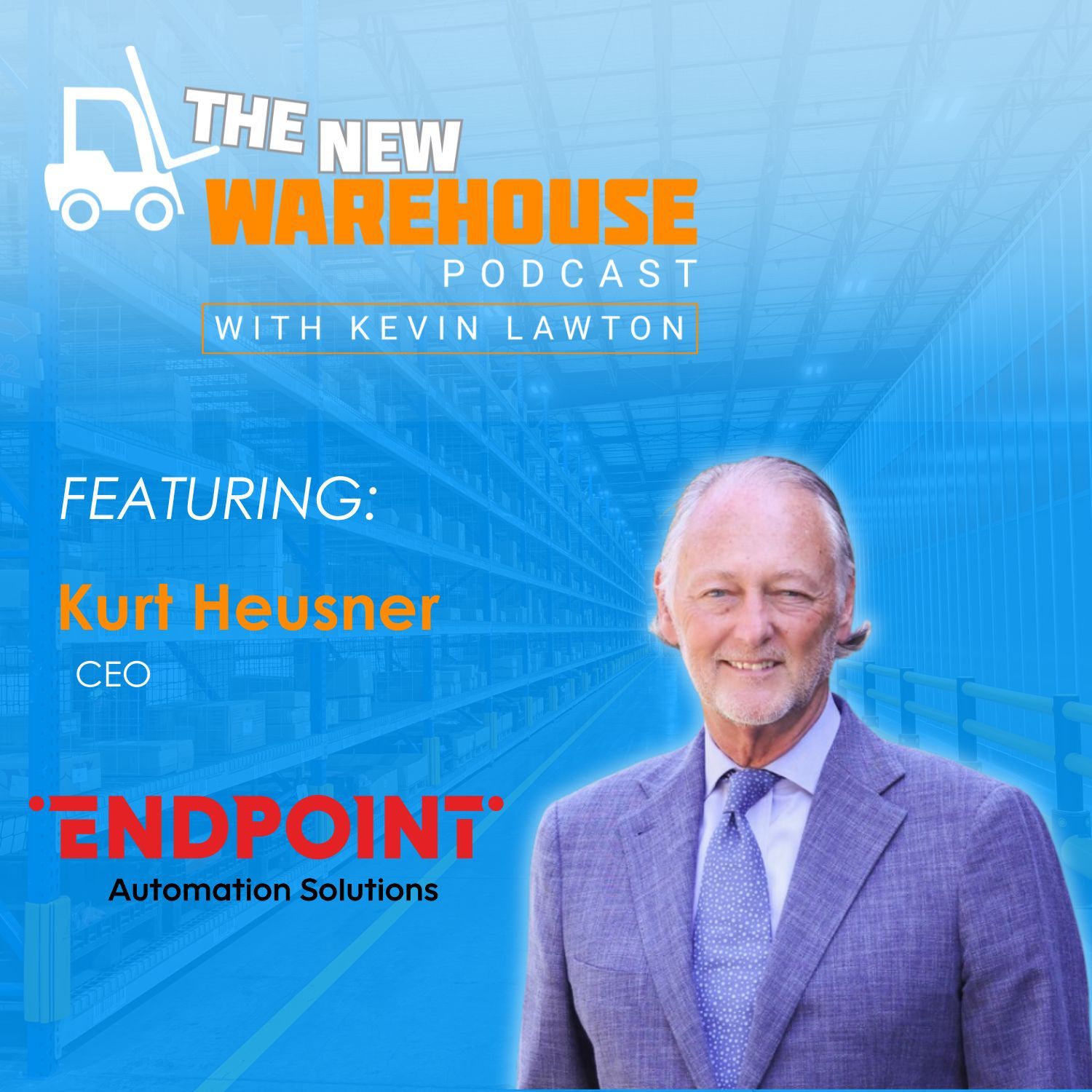
Warehouse Digital Transformation: Bridging ERP and the Warehouse Floor
In this episode of The New Warehouse Podcast, Kevin chats with Kurt Heusner, CEO of Endpoint Automation Solutions, about how mid-market warehouses can modernize through digital transformation. Endpoint Automation Solutions helps companies bridge the gap between their ERP systems and the realities of warehouse operations.
Kurt explains how modular, human-centered automation empowers smaller operators to stay competitive, improve visibility, and scale intelligently without overwhelming their teams or budgets. Together, they explore warehouse digital transformation for mid-market companies—balancing technology with people, outcomes, and agility.
Connecting the ERP to the Warehouse Floor
Kurt describes Endpoint’s mission as powering connected, intelligent, and human operations. “Endpoint Automation Solutions is intended to power warehouses and operational environments that are connected, intelligent, and human. And I really emphasize that human part of it,” he says. The company’s focus is to bridge the gap between ERP systems, “the brain of the business,” and what actually happens on the warehouse floor.
“We’re here to kind of bridge the gap between the ERP system…and how do you connect that to the realities of the warehouse floor or the distribution facility,” Kurt explains. By offering modular solutions, Endpoint allows operators to implement automation in stages—taking “bite-sized chunks” that target the most critical needs first. This modularity enables mid-market distributors and manufacturers to operate more efficiently, accurately, and competitively in an increasingly global marketplace.
Modular Automation for the Mid-Market
Kurt notes that mid-market warehouses are at a turning point. “The mid-market and SMB customers are at this massive technology inflection point,” he says. While large enterprises have the budgets and teams for R&D, many smaller players struggle to identify what technology they need. Endpoint’s approach centers on modular, scalable solutions that can be deployed quickly and integrated easily.
“Endpoint focuses here because the segment needs practical automation—not over-engineered systems. We want things that can be deployed quickly, easily integrated, and scaled as they grow. You can consume it as you go,” Kurt explains. This flexible, consumption-based model helps companies avoid the costly, high-risk “big bang” implementations that often fail due to lack of alignment or change management.
He underscores the importance of connecting leadership with the realities of the warehouse floor: “When we find that a project is failing, many times it’s because of this lack of continuity between the people walking on the carpet, the managers in between, and the people actually doing the work on the warehouse floor.”
Finding Balance in Warehouse Digital Transformation
Kurt believes the future of warehouse digital transformation depends on striking the right balance between technology and the human workforce. “The technology is intended to sit in the background and help the person do their job more effectively,” he says. Too often, warehouses implement technology without providing employees guidance on how it can make their work easier or more meaningful.
He also challenges the narrative that automation and AI are replacing workers. “No, everything’s not gonna be automated. AI doesn’t take over everything… I’d like to see how AI has specifically taken out the significant numbers of people we’re talking about, or was that just bad human planning?” Instead, Kurt encourages leaders to focus on empowering employees to identify pain points and suggest which tasks should be automated first.
He recalls a customer who did exactly that: “He polled his employees by ‘where are the things that you hate to do?’ And that if we got rid of it, none of you would care. And they targeted and prioritized a set of those, and that’s where they started with their technology implementation.”
Key Takeaways
- Mid-markets are driving warehouse digital transformation by adopting modular, human-centered automation.
- ERP integration is critical—connecting the “brain” of the business to real warehouse activity unlocks efficiency and agility.
- Modular automation reduces risk by allowing smaller operators to scale gradually, rather than overhauling everything at once.
- Human adoption determines success—projects fail when leadership and front-line teams lack alignment on purpose and outcomes.
Listen to the episode below and leave your thoughts in the comments.
Guest Information
For more information on Endpoint Automation Solutions, click here.
To connect with Kurt Heusner on LinkedIn, click here.
For more information about warehouse digital transformation, check out the podcasts below.
591: Making Digital Transformation in Warehousing Work
527: Digital Transformation with Labeling
Supply Chain Point: People First Supply Chain Transformation
